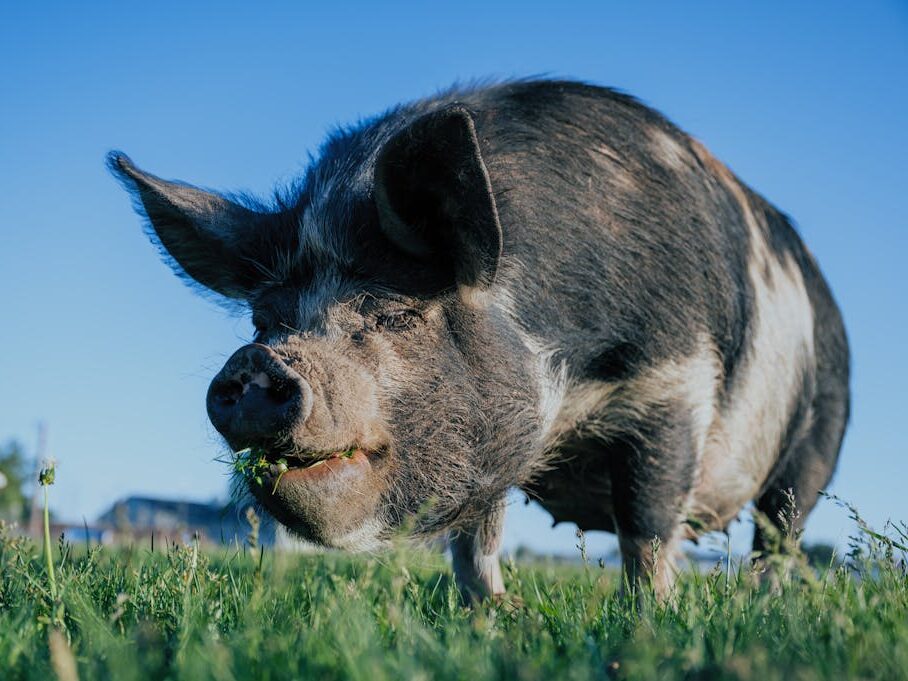
Pigs
From initial registering your pigs through to the final product packaging and labelling.
Updated 7 June 2024
Preparing meat
Cutting list
Prepare a cutting and curing plan which includes details of what products you want to make from the pig carcasses.
You should do this well in advance. If you employ a butcher they will need to know this to plan their time and how much they will charge you.
Before starting on a cutting plan, consider what the meat will be used for — it can be useful to ask your customers what they want. Some butchers also have a standard cutting plan you can use.
When making a cutting plan, think about:
- Yield of the pigs — post-slaughter, carcasses will weight around 72% of the original weight and around 62% will be edible meat after cutting.
- Different cuts from body parts — AHDB has a useful yield guide with images.
- Processing, for example if you want cured meats, mince or sausages.
To help you with planning, take a look at example cutting lists:
- ’Simple Pork Cuts Checklist/Walkthrough’, Anchor Ranch Farm
- ’Half hog cut sheets – 3 examples, mix and match’, Anchor Ranch Farm
- ’Standard pig cutting list’, Keythorpe Valley Farm
If want to sell pork in a meat box, take a look at AHDB’s guidance on how to prepare a pig meat box scheme.
Butchering
Sending your pig carcasses to be prepared by a butcher is the simplest way to get produce ready for yourself or for selling to customers. You can prepare and process the meat at your farm/croft, but you must follow several food safety regulations.
Butchering elsewhere
When choosing a butcher, you may want to ask for recommendations from other local farmers/crofters. Butchers will cut the carcasses according to your instructions, and can package and label them correctly for you.
To sell pig meat prepared by butchers, you will still need to comply with food safety regulations around storing meat and be registered as a food business (see ’Registering as a food business’).
Read more:
Butchering on farm/croft
If you want to butcher pig carcasses at your farm/croft, you must be approved as a food business and follow food safety duties (see ’Registering as a food business’).
If you plan only to sell directly to customers or to local retailers then your premises must be registered and approved by the local authority but they do not need to be approved by Food Standards Scotland.
Your cutting room will need to meet specific requirements laid down in regulation in particular to maintain product below 7 degrees for meat and 3 degrees for offal; facilities for handwashing and for separation of products at different stages. You also need to ensure that carcasses brought back from the abattoir are maintained at a low temperature.
You will need to set up a Food Safety Management System using Hazard Analysis and Critical Control Points (HACCP). Guidance on developing your system here
You can either employ a butcher to come to your farm, or butcher the meat yourself — you do not need a licence for this, but it is useful to take a butchering course. Many different organisations run these, like Scottish Craft Butchers.
Butchering waste is considered animal by-products, and must be handled and disposed accordingly (see ’Pig carcasses & waste’).
Packaging
If you package pig meat on your farm/croft, you must be registered as a food business (see ’Registering as a food business’) and follow food safety regulations: see the FSS guide on ’Wrapping, Packaging and Transport Hygiene’ of meat.
Meat must be wrapped hygienicallly and securely in approved material. Store packaging so it is dry, clean, and in good condition. Read the legislation on packaging materials.
Labelling
To sell pig meat, you must comply with labelling regulations ensuring that customers are being given correct information and the product can be tracked through the supply chain.
Labelling requirements depend on how the meat is packaged and who you sell it to.
Read about additional labelling requirements for frozen products.
You must label it with:
- Name of the food
- Ingredients list including allergenic ingredients in bold
If you are making products with your meat – eg pies, sausages – you will also need a
Read guide on labelling pre-packaged food for direct sale by FSS.
Prepacked for onward sale
Meat that is securely packaged before it is sold to retailers who sell it to customers, is considered ’prepacked’. You must label it additionally with:
- Use-by date
- Name and address of your farm/croft business
- Storage instructions (e.g., ’Keep refrigerated’)
- Preparation instructions (if needed)
- Identification mark
Read more about ’Meat labelling guidance’, FSS
Claims
You are liable for false claims, so it is important to familiarise yourself with the guidance.
Claiming that food can cure or prevent a disease is illegal, as these products are classified as medicines. Claims about nutrition, either the energy or the nutrient contained in meat (e.g., fat free), have specific requirements you must follow (EU website, as retained in UK law).
Read more:
Storing meat
You must always store meat in either fridges (0-5 °C) or freezers (-18 °C or lower). If you get a delivery from a slaughterhouse or a butcher’s, you must unload the meat quickly to avoid the cold chain from being broken.
Exposed meat, like carcasses, must be stored in a separate room from packaged meats. Carcasses must be hung high enough so they do not touch the floor.
Read more:’Bulk freezing of ambient and chilled foods’, Food Standards Agency